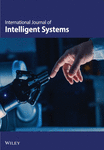Abstract
Regarding remote sensing images analysis viewed as a pattern recognition problem, one has to take into account numeric and symbolic knowledge about searched classes and objects. Firstly we briefly describe an expert system approach for image classification according to expert knowledge about best sites for vegetation classes in terms of out-image data (D.E.M.,† soils, hydrological network, roads, villages…). In this framework of an image interpretation system for automatic cartography based on remote sensing image classification improved by a photo interpreter knowledge, we developed a machine learning system based on neural networks which simultaneously produce fuzzy rules, with their linguistic approximation, and a final classification. This article investigates the application of mutual information criterion to simplify fuzzy rules namely to select an informative subset of premises out of an initial set. A vegetation classification experiment (made according to generated rules before and after the simplification process) with a satellite image will be presented. We conclude by summing up the various aspects of fuzzy theory used in our application. © 1997 John Wiley & Sons, Inc.




